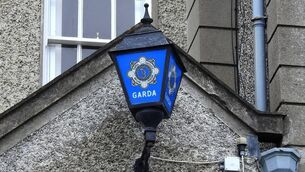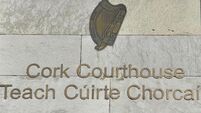Government-promoted owner-as-tenant distressed mortgage plan misses target of 50 by end of year

A Government-promoted initiative to allow people to be tenants in homes linked to distressed mortgages has failed to meet its target of 50 by the end of the year.
However, the operators of the first commercial-run mortgage-to-rent scheme insist they have 400 eligible homeowners lined up.
When they announced the pilot initiative in July, Housing Minister Eoghan Murphy and minister of state Damien English said that Home for Life Ltd was expected to deliver a minimum of 50 cases in 2018.
However, the Department of Housing has confirmed to the Irish Examiner that no cases have been completed.

“We have not delivered any cases in 2018 yet,” said a department spokesperson. “We continue to work closely with the Housing Finance Agency and Home for Life to make progress under the scheme.”
Previously, mortgage-to-rent (MTR) arrangements have been made exclusively with approved housing bodies (AHBs). These housing associations purchase properties that are the subject of underperforming loans from banks or other lenders, and then rent them back to the occupiers, who could not keep up their mortgage payments.
However, the 18-month to two-year duration of the process, and the fact that the State-funded AHBs’ loans were added to government debt, prompted a new approach to be sought.
Home for Life Ltd was chosen in early July to operate the pilot commercial MTR scheme, with deals to be completed in less than six months. Under this model, the company buys a home from the bank or from another lender to whom the borrower has surrendered the property. Home for Life leases the home to the local council over 25 years, which then allows the occupant to remain in place, as a social housing tenant paying an affordable rent.
Home for Life chief executive Paul Cunningham acknowledges that things have not moved as quickly as was expected when the announcement was made in July. But, he said, they expect several hundred cases to be completed by the end of the first quarter of 2019.
“We’re working on more than 400 cases that are eligible for mortgage-to-rent, which the banks have approved as suitable,” he said. “Some of these have been already approved, too, by the local authorities.”
While some of these are expected to be finalised by late January, further steps need to be taken first, including completion of a statement on the condition of the property and any required repairs. The homeowner must also receive independent legal and financial advice before entering an agreement, which cannot be finalised until a cooling-off period elapses.
In July, Mr English said he was happy to see Home for Life implementing the scheme and helping a far greater number of mortgage-to-rent cases. The Irish Examiner asked the department if a decision had been made on whether to permit Home for Life to implement the scheme in the longer term. A spokesperson said the rolling out of an alternatively-funded, MTR long-term model was being kept under review, pending the outcome of the pilot model.
“A number of lenders are currently engaging with Home For Life and the department understands that a number of mortgage-to-rent cases, under this alternatively funded, long-term MTR model, will complete in the coming weeks,” said the spokesperson.
How the scheme works
The first commercial mortgage-to-rent (MTR) model involves Home for Life purchasing a property for an undisclosed discount on the market value, saving the lender on any legal and other costs that might be associated with a repossession.
The local authority leases back from the company at 95% of market rent rates, but there is a cost to the exchequer, as the council may only get around 45% of typical local rent by entering an affordable rent arrangement with the former borrower as a tenant.
Home for Life CEO Paul Cunningham said the new arrangement still potentially involves less cost to the taxpayer, as the entire purchase cost is typically added to Government debt under existing schemes that involve housing associations as approved housing bodies.
A €23m fund is available in 2019 to cover State costs under MTR, and Home for Life is hopeful that a significant share will go to councils leasing from them under the pilot arrangement.
Based on the average house value of around €200,000, the company’s roughly 400 active cases relate to properties with a combined value in the region of €80m.
In addition to these files, Home for Life said that it has been in contact with borrowers and lenders in relation to an average of 25 to 30 new cases on a weekly basis in recent months.
MTR was introduced in 2012 as a way to reduce numbers of people in significant mortgage arrears being forced out of their home. However, of 4,221 cases submitted by lenders for possible resolution under the scheme to the end of last September, nearly three-quarters did not meet strict criteria or else fell through before completion.
Of the 386 cases that were successfully completed by September — by the transfer of ownership and occupants remaining on as social housing tenants — 44% were finalised since some easing of the rules from early 2017 as part of the Government’s Rebuilding Ireland plan.













